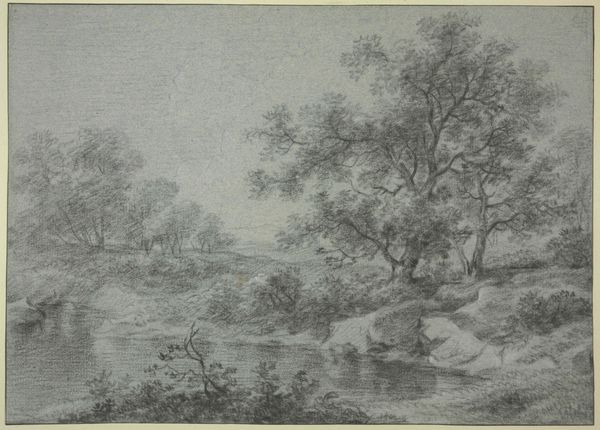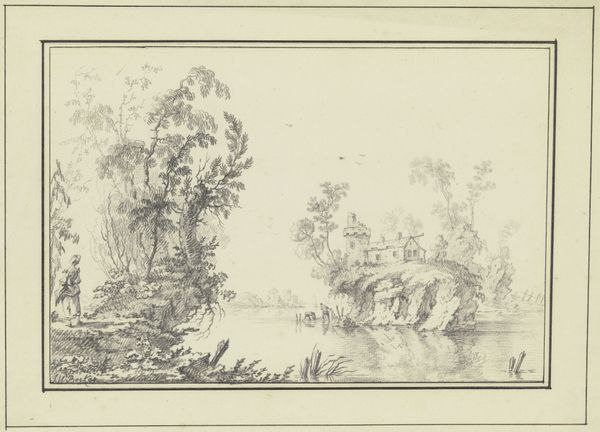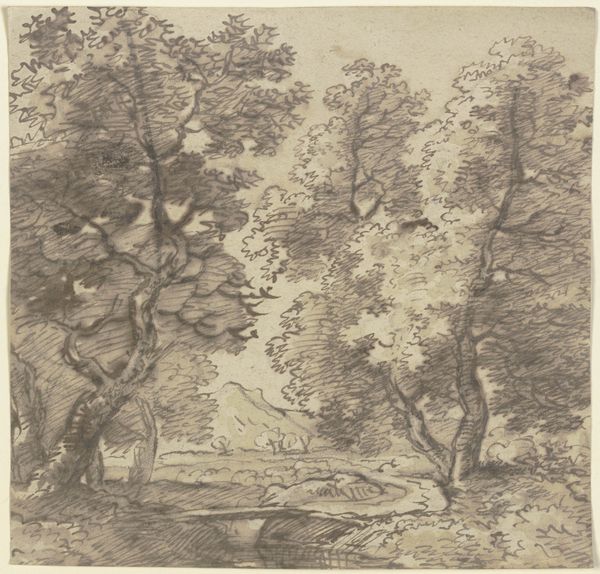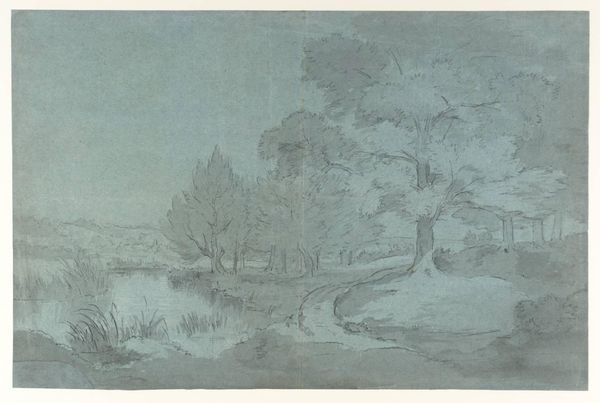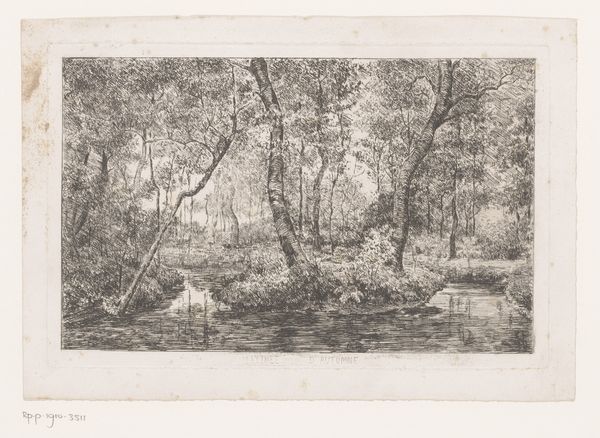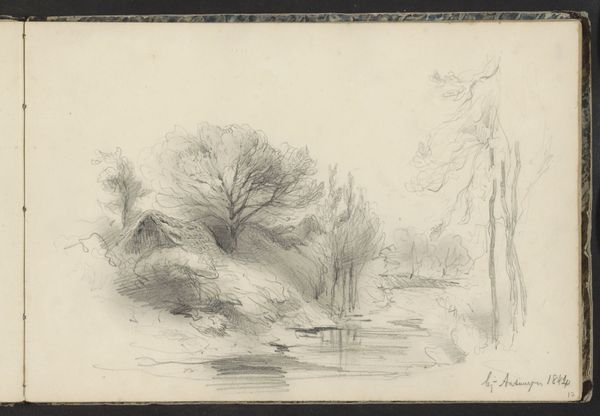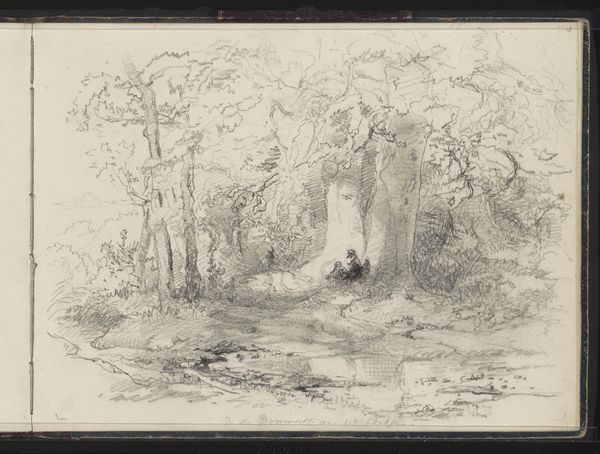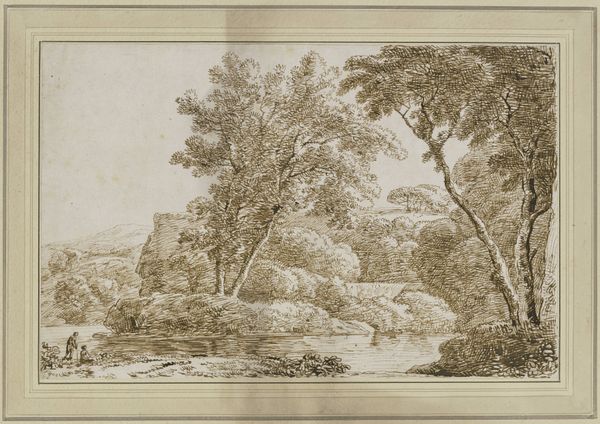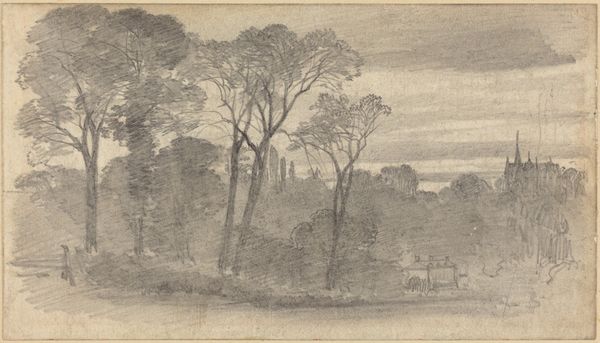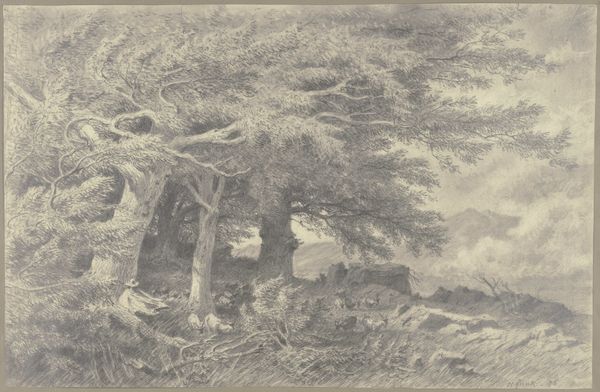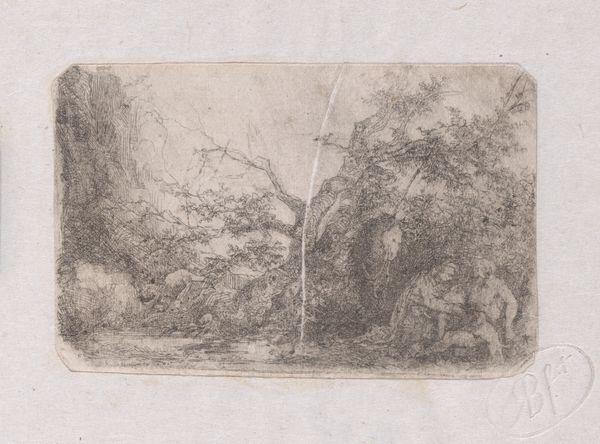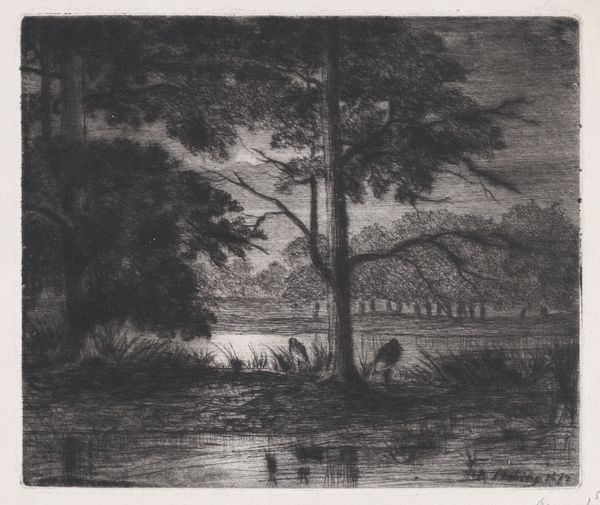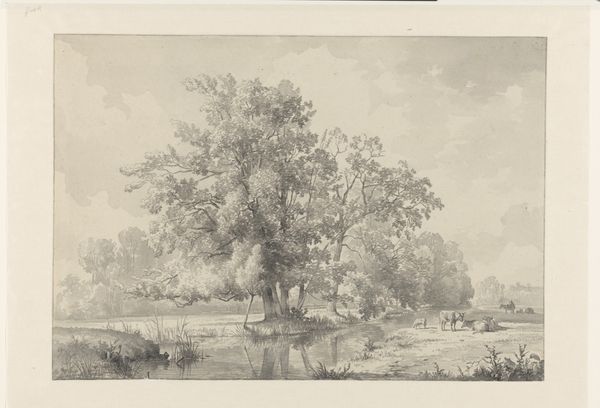
drawing, pencil, chalk, charcoal
#
english
#
drawing
#
landscape
#
charcoal drawing
#
romanticism
#
pencil
#
chalk
#
15_18th-century
#
charcoal
Copyright: Public Domain
Curator: Let's take a closer look at this drawing titled "Forest Landscape." The work, currently housed here at the Städel Museum, is attributed to the English artist Thomas Gainsborough. He is recognized as one of the most significant British artists of the 18th century. He used charcoal, chalk, and pencil to bring this scene to life. Editor: There's an undeniable brooding quality about it, isn’t there? A certain melancholy. The muted tones and dense layering of charcoal evoke a feeling of both tranquility and confinement simultaneously. Curator: It certainly speaks to the Romantic sensibility brewing in the late 18th century. Gainsborough often moved between portraiture and landscape, using landscape as more than just a backdrop. He was actively trying to give voice to our emotive experiences with the natural world. I also think it's important to situate Gainsborough within the economic landscape. Land ownership was shifting. The aristocracy had power to influence the reception and narrative surrounding idealized rural settings. Editor: It feels almost... performative. This depiction of the woods is a demonstration of control as opposed to unbridled naturalism, yes? We should ask ourselves, whose landscape is this? What power structures are inherent to that concept? There are socioeconomic implications tied into even this charcoal depiction of trees. The picturesque movement's promotion of "pleasing" landscapes often whitewashed the realities of rural life for laborers. Curator: Yes, there is this tension. Gainsborough himself, while benefiting from patronage, also experimented with more "natural" styles, as if attempting to find authenticity. Look how he suggests the movement of light and shadow! The rapid, energetic strokes that define foliage against calmer passages show a careful negotiation between reality and ideal. How does the museum’s framing contribute to how the work is read today? Editor: By putting works like this on display in grand institutions, we invite viewers to consider the complex legacy of the aestheticized nature of rural England. It requires us to acknowledge these images' role in both representing and potentially obscuring aspects of historical truth and exploitation. Curator: A reminder that even depictions of nature are, in many ways, constructed, cultural narratives. Thank you for making those tensions visible for us today. Editor: Of course! Always good to examine the undercurrents flowing within art.
Comments
No comments
Be the first to comment and join the conversation on the ultimate creative platform.
